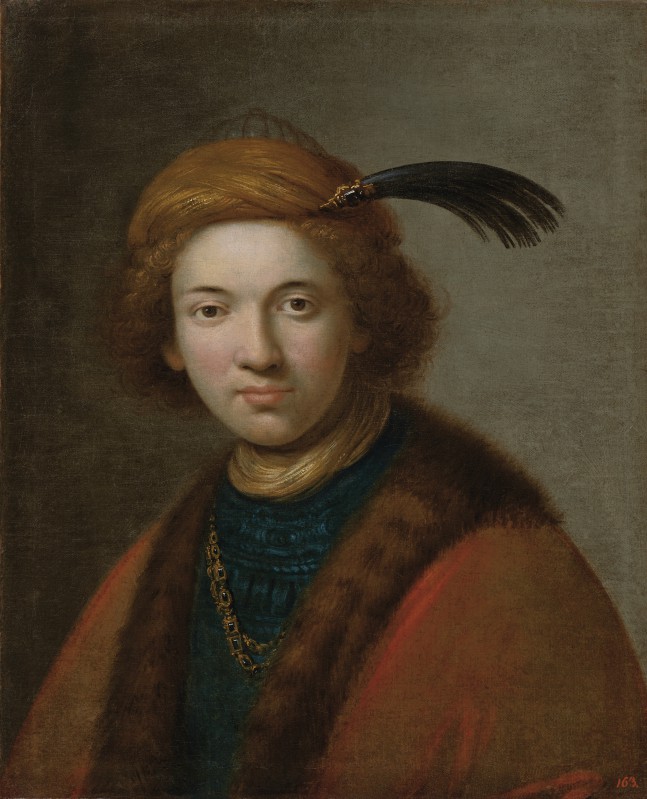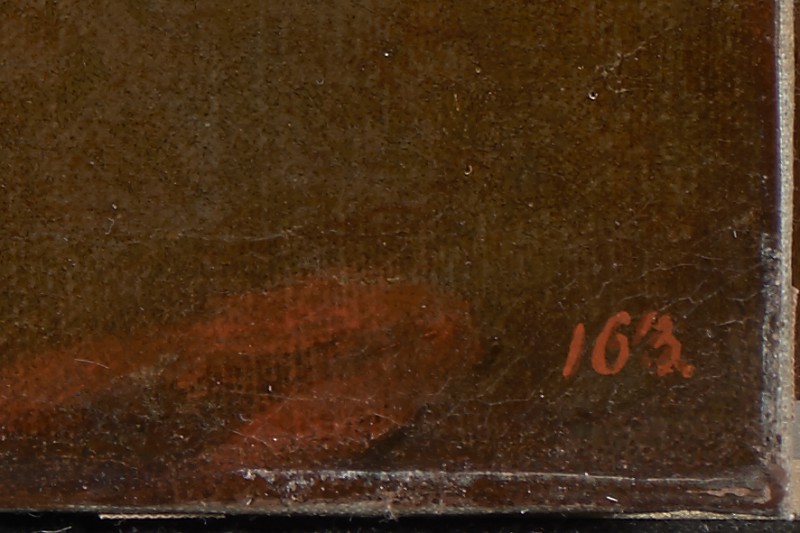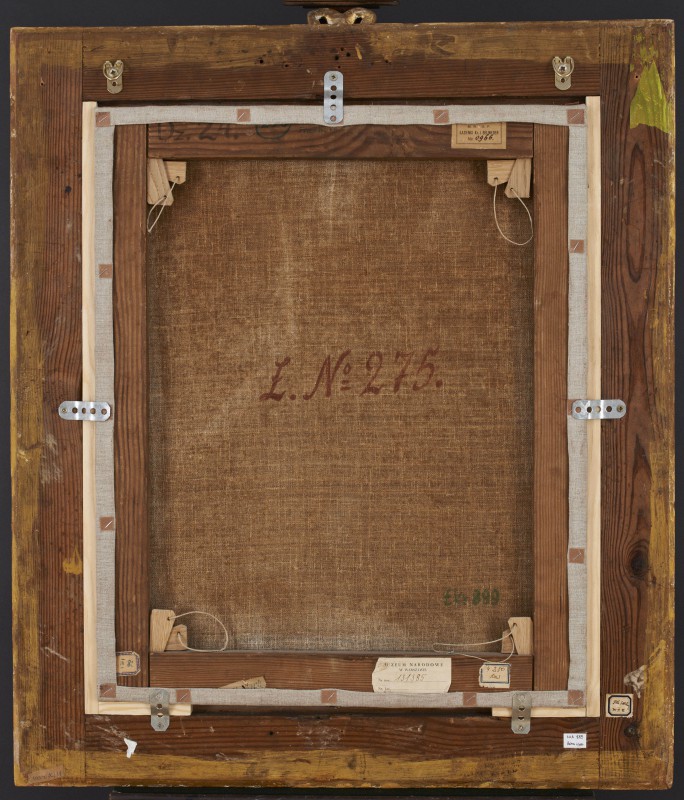Young Boy in Turban with Heron’s Plume
- Date
- 1769-1772
- Object type
- painting
- Technique
- oil
- Material
- canvas
- Dimensions
- 64,0 x 51,9 cm
- Acquisition date
- 1783
- Location
- The Palace on the Isle - Portrait Room, ground floor
- Marks and inscriptions
- red number 163 of the Stanisław August collection, bottom right
- Place of Origin
- Warsaw (Poland, Mazowieckie)
- Owner
- The Royal Łazienki
- Museum number
- ŁKr 899
In the catalogue of the Stanisław August collection the painting is given as a copy after Rembrandt by ‘Mlle de Neuf Germain’. ... . Stanisław Iskierski (S. Iskierski, Katalog galerii obrazów Pałacu w Łazienkach w Warszawie, Warszawa 1931, no. 101) identified the surname ‘du Neuf Germain’ with the name the artist Anna Rajecka assumed after her marriage to Pierre-Marie Gault de Saint Germain. This incorrect attribution was later repeated ... , despite the fact that Zygmunt Batowski wrote about a ‘Mademoiselle Du Neufgermain’ in his book about female artists in the times of Stanisław August (Z. Batowski, Malarki Stanisława Augusta, Warszawa 1951, pp. 47–48). ... .
Only two signed works by Duneuf-Germain are recorded: a copy of a portrait of Maurice de Saxe after Maurice Quentin de La Tour, formerly in the Stanisław August collection (no. 151 in the catalogue; canvas, 63 x 51 cm), later in the Mniszech collection, 1902 put up for auction in Paris ... and the portrait of a girl, in the style of François Hubert Drouais, in the Bowes Museum, Barnard Castle, dated 1772 ... . Both bear the signature Mlle Duneufgermain. In the Stanisław August collection there were four paintings by Mlle Duneuf-Germain. ...
The paint layer in the Łazienki picture is applied thinly, the brushwork intricate and fine, the face of the young man is delicately modelled with greyish and greenish hues—which is strongly reminiscent of the technique used for miniature painting. It is not, as would seem to be the case, a copy of a specific original, but rather a pastiche alluding to the Rembrandtesque tronies—representations of imaginary models in extravagant, fantastic costumes. ... . [See D. Juszczak, H. Małachowicz, The Stanisław August Collection of Paintings at the Royal Łazienki. Catalogue, Royal Łazienki Museum, Warsaw 2016, no. 41, pp. 173–176.]





